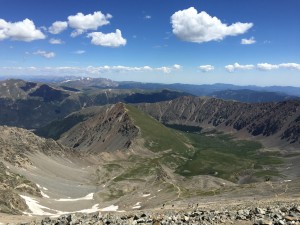The Importance Of Momentum While Hiking
A summary of Newton’s first law is
An object in motion tends to stay in motion.
This law applies to hikers too. And, as a hiker, what’s more important to staying in motion than momentum? Momentum going uphill is most important, since gravity is most against you here. That’s why mountain etiquette is vital. If respected, it helps everyone settle into and keep their flow.
Besides observing etiquette, what are other ways to keep a good pace? It can be tricky to figure out, but feel free to experiment and mentally note how it’s working. That’s what I’ve done, and here are a few things I’ve found to help. I hope you’ll find it useful.
Setting Your Pace
Starting out at a bit slower pace than I feel I could handle right now really helps me keep my breath and energy over longer distances. Like the tortoise will tell you, slow and steady.
When hiking something particularly long or steep, I can start out feeling good. It first feels like I’m really kicking ass, and then I realize it’s my ass that’s being kicked. Hiking at appreciable elevation amplifies this. I run out of energy or breath or both, and need to stop for a break. I didn’t have a pace here; I had a sprint.
This cycle of frequently starting and stopping robs me of momentum. It means I’m standing on my tired feet longer, and using more energy. Being out in nature longer isn’t a bad thing, but that’s hard to appreciate when I’m beat. Pacing helps me better enjoy the journey.
Slow Covers More Ground Than Stop
If I’m running out of steam, I try a slower pace. Breaks are helpful ways to refuel and rehydrate, but some of that can be done while trekking along. Even the slow going covers more ground than you might think, which definitely adds up.
Break for Beauty
There’s plenty of scenic vistas to admire out there, right? If I time a well-deserved break with sight-seeing, I’ll get more bang for my buck. That sandwich and water will taste a lot nicer when accompanied by an expansive view. And that fantastic view inspires me to get back to hiking after my rest.
Breath as Momentum
I’ve discussed how important breathing is while running, but it’s just as important while hiking.
I time the steps to my breaths, which helps get more of my body on the same page. A deep, periodic set of breaths set to my steps helps me maintain a steady pace and get into the zone.
Full-Body Pace
I’ve also really enjoyed my hiking poles. They give my arms something to do, and are another way, along with breathing, to get my whole body into a rhythm. My arms, legs, and chest are all working in concert to move me along, and my entire body feels that pace and sinks right in to it.
Once the body is coordinated, I can enjoy the view or brainstorm or chat while staying steady.
Hiking poles are also nice because they help round out my natural sense of balance, and give a little more stability.
Watch Your Step
On steep ascents, small, deliberate steps help with pace too. I can avoid slipping, which really ruins the flow. And solid, secure foot placement also helps prevent falling and injuring myself. My stride length and hiking poles adjust to the slower pace, and that means I’ll be at the peak sooner so I can enjoy the panoramic view!
Flow Found
I’ve discovered these ideas throughout my hikes, but only during my most recent one up Grays and Torreys did it really sink in. A steady pace had me feeling good with my endorphins flowing, and I realized how things worked in concert to keep me moving along. The starts of this list came together as I reflected on what really worked for me. It’s also nice to codify something previously felt, but not known.
Have you experience with any of the above? I’d love to hear what else works for you.
